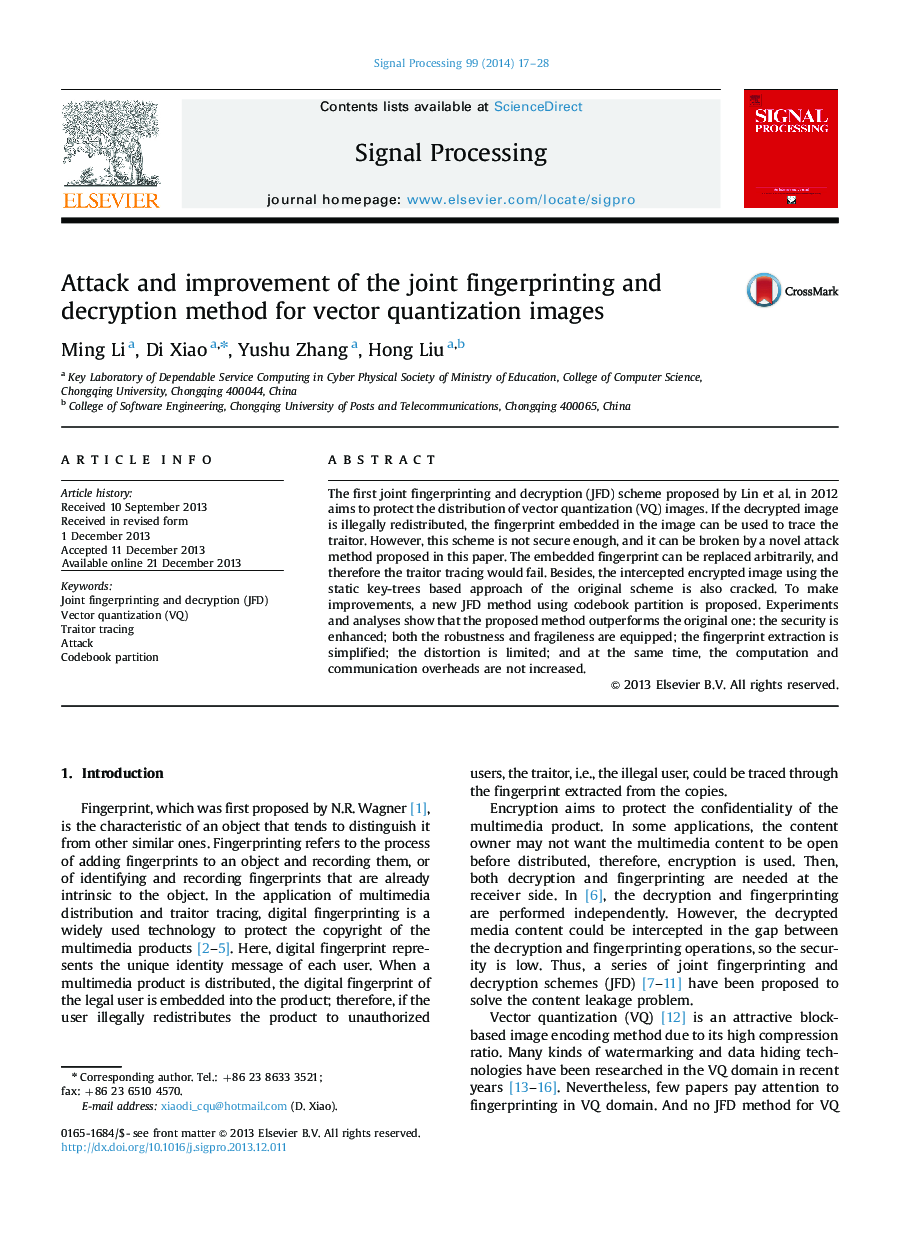| Article ID | Journal | Published Year | Pages | File Type |
|---|---|---|---|---|
| 563875 | Signal Processing | 2014 | 12 Pages |
•The first joint fingerprinting and decryption (JFD) scheme is cracked.•The insecurity problems of the original method are overcome.•A new JFD method based on codebook partition is proposed.•The practicability of our method is better than that of the original one.
The first joint fingerprinting and decryption (JFD) scheme proposed by Lin et al. in 2012 aims to protect the distribution of vector quantization (VQ) images. If the decrypted image is illegally redistributed, the fingerprint embedded in the image can be used to trace the traitor. However, this scheme is not secure enough, and it can be broken by a novel attack method proposed in this paper. The embedded fingerprint can be replaced arbitrarily, and therefore the traitor tracing would fail. Besides, the intercepted encrypted image using the static key-trees based approach of the original scheme is also cracked. To make improvements, a new JFD method using codebook partition is proposed. Experiments and analyses show that the proposed method outperforms the original one: the security is enhanced; both the robustness and fragileness are equipped; the fingerprint extraction is simplified; the distortion is limited; and at the same time, the computation and communication overheads are not increased.
